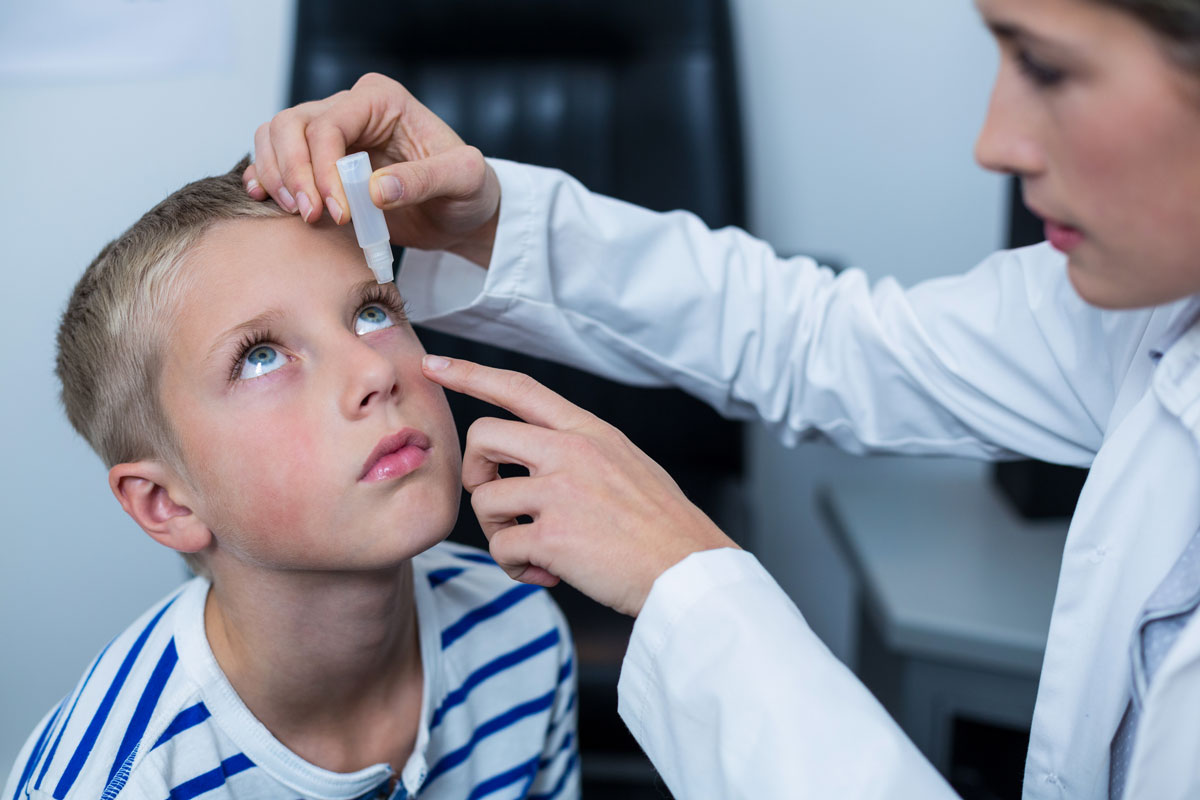 |
| Children with myopia may respond best to an atropine concentration of 0.05%, study shows. Photo: Getty Images. |
Atropine is well established as an effective intervention to delay childhood myopia progression, but some concentrations may work better than others in achieving this goal with less potential adverse effects, according to a new study from Korea.
In a comparison of 16 randomized, controlled trials that collectively enrolled about 3,300 participants, investigators found the top three effective atropine concentrations to be 1%, 0.5% and 0.05% out of eight that were measured. Notably, they found the 0.05% concentration to be the most beneficial dosage for slowing myopia progression.
Searching PubMed, EMBASE, Cochrane Central Register of Controlled Trials, WHO International Clinical Trials Registry Platform and ClinicalTrials.gov, the authors selected studies involving atropine treatment for at least one year for myopia control in children. The investigation included a meta-analysis of placebo-controlled and head-to-head randomized controlled trials that compared eight atropine concentrations: 1%, 0.5%, 0.25%, 0.1%, 0.05%, 0.025%, 0.02% and 0.01%. The study’s primary outcomes were mean annual changes in refraction (diopters/year) and axial length (millimeters/year). The researchers also considered the proportion of eyes showing myopia progression, in addition to safety outcomes, such as photopic/mesopic pupil diameter, accommodation amplitude and distance/near best-corrected visual acuity.
As expected, there was significantly less myopia progression in the atropine treatment group than in the controls.
Another key finding: Higher-dose atropine was better at slowing refraction changes and axial elongation than lower concentrations. Among moderate doses (0.02% to 0.25%), 0.05% showed comparable efficacy to that of high-dose atropine and was ranked third in terms of slowing refraction changes and second in slowing axial elongation. When it came to myopia control, 0.05% was ranked as the most beneficial concentration.
Considering refraction change, axial elongation and relative risk for myopia progression, 0.05% was comparable to high-dose (1% and 0.5%) atropine.
The efficacy trends indicated that the various atropine concentrations might not always follow a dose-dependent order, the authors noted.
On the other hand, the researchers found adverse effects from the various concentrations may be dose-related. For example, high-dose atropine showed lower-ranking probabilities for three safety outcomes (i.e., photopic/mesopic pupil diameter, accommodation amplitude) compared with lower doses. In terms of atropine-related adverse effects, 0.05% showed better safety profiles than higher doses.
Of course, the optimal atropine concentration should be the one with the best balance between efficacy and safety, the authors suggested.
Ha A, Kim SJ, Shim SR, et al. Efficacy and safety of eight atropine concentrations for myopia control in children: a network meta-analysis. Ophthalmology. October 21, 2021. [Epub ahead of print]. |


